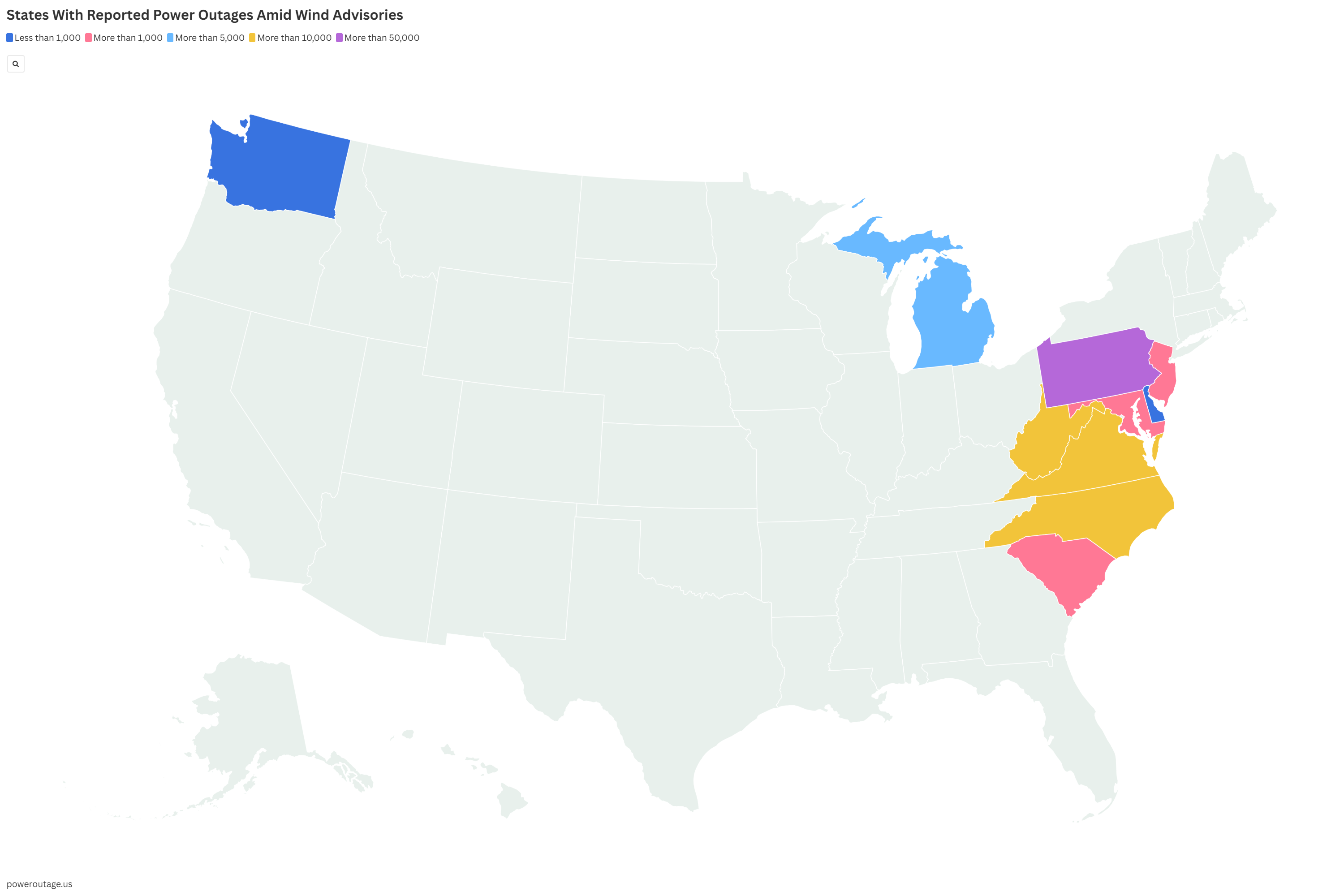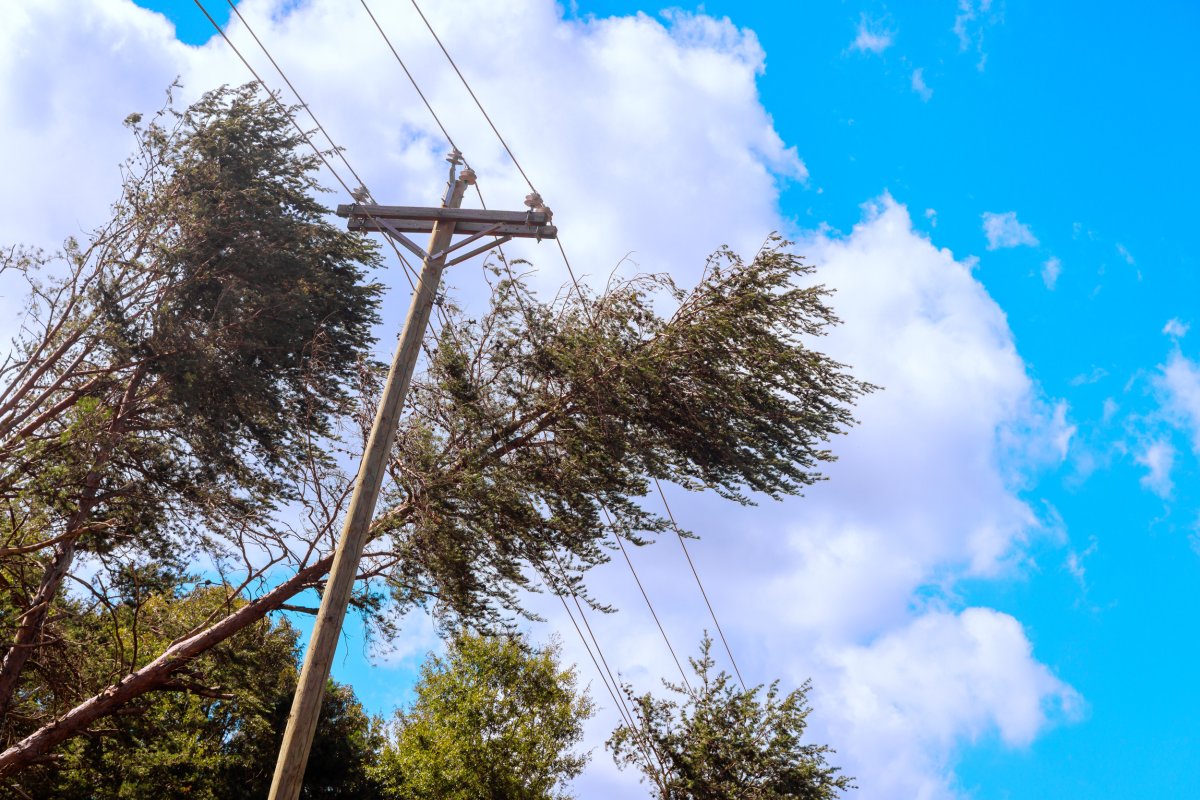
A series of wind advisories issued by the National Weather Service (NWS) on Tuesday warn of hazardous gusts across 10 states, increasing the risk of downed trees and power outages. From the Great Lakes to the Mid-Atlantic and Pacific Northwest, residents are being urged to secure loose items and prepare for potential service disruptions.
The advisories span from Michigan to Washington state, with high winds expected to persist into Wednesday in some regions. Utility companies have activated outage monitoring and response protocols as wind speeds are forecasted to reach up to 50 mph in some locations.
Why It Matters
High winds can cause significant disruptions to daily life by damaging infrastructure and knocking out electricity. With advisories in effect for populous corridors along the East Coast and across key mountain regions, millions may experience travel delays, power outages or property damage. Utility providers are on alert, and residents are being encouraged to monitor local updates and be prepared for intermittent service.

photovs/Getty
What to Know
As of Tuesday afternoon, thousands of people were without power.
The NWS has issued detailed advisories for multiple regions, with alert durations varying by location:
- West Virginia: Western Greenbrier, Monroe, Bland and Giles counties are under a wind advisory until 9 p.m. Tuesday. Eastern Greenbrier remains under an advisory until 8 a.m. Wednesday, while Northwestern Pocahontas is under alert until 2 p.m. Wednesday, according to WVNS.
- Michigan: Advisories remain active in Alger, Luce, Northern and Southern Schoolcraft counties through 8 p.m. Tuesday.
- South Carolina and North Carolina: Mountain counties including Avery, Buncombe, Mitchell and Watauga are under advisories until 8 a.m. Wednesday.
- Virginia: Grayson and Western Highland Counties, and Washington, D.C., and surrounding northern Virginia counties are under advisories until 8 p.m. Tuesday.
- Delaware, Maryland, New Jersey and Pennsylvania: Central, northern and coastal areas are all experiencing advisories set to expire at 8 p.m. Tuesday, per the NWS wind advisory map.
- Washington state: Eastern regions including Okanogan, Bridgeport and Nespelem face advisories from 5 a.m. to 8 p.m. Wednesday, with strong gusts expected across passes and valleys.
As of 4 p.m. ET, the following power outages were reported, according to PowerOutages.us:
- Virginia: 22,000
- West Virginia: 11,000
- North Carolina: 10,000
- Delaware: 200
- Maryland: 4,000
- New Jersey: 2,500
- Pennsylvania: 54,000
- Washington: 650
- South Carolina: 3,000
- Michigan: 7,000
What People Are Saying
NWS meteorologist William Parry, who works at the Blacksburg, Virginia, office, told Newsweek: “The strongest winds are going to be this afternoon through about 9 o’clock this evening for most of the area. But the high elevations … they’ll have strong winds through the night.”
Parry added that the winds are caused by an area of low pressure across the Northeast while strong, high pressure builds in the Mississippi Valley. No thunderstorms are accompanying the winds.
NWS meteorologist Jared Rackley, who works at the Pittsburgh office, told Newsweek: “We tend to see our windiest months in the late winter into the early spring timeframe. That’s when we get these big systems that move through and cause a lot of wind.”
Appalachian Power posted on X, formerly Twitter: “We’re closely monitoring strong winds that are forecasted throughout our region this afternoon. Stay up-to-date with local forecasts, secure any outdoor belongings and keep informed about outages that may impact your account.”
A spokesperson for FirstEnergy in Pennsylvania told Newsweek: “As of 3 p.m., the four utilities that comprise FirstEnergy in Pennsylvania have a total of nearly 30,000 customers without power. Crews have already restored power to about 5,000 customers. It is likely that we will continue to pick up new outages throughout the day with another six hours or more of severe weather ahead, so it is difficult to say when all customers will be restored. Crews are working as quickly as safety permits to get their lights back on and will continue to work around the clock until the last customer is restored.”
The spokesperson added: “Our crews can not safely work in bucket trucks when wind speeds exceed 40 miles per hour, and cannot use the buckets to raise material in winds of 30 mph or higher.”
What Happens Next
Winds in the affected regions are expected to taper off by late Wednesday as high pressure builds in from the west. The NWS advises residents to remain alert, especially in higher elevations and exposed areas. With the threat of power outages continuing through Wednesday morning in some mountainous counties, emergency services recommend keeping flashlights, batteries and mobile devices charged.




